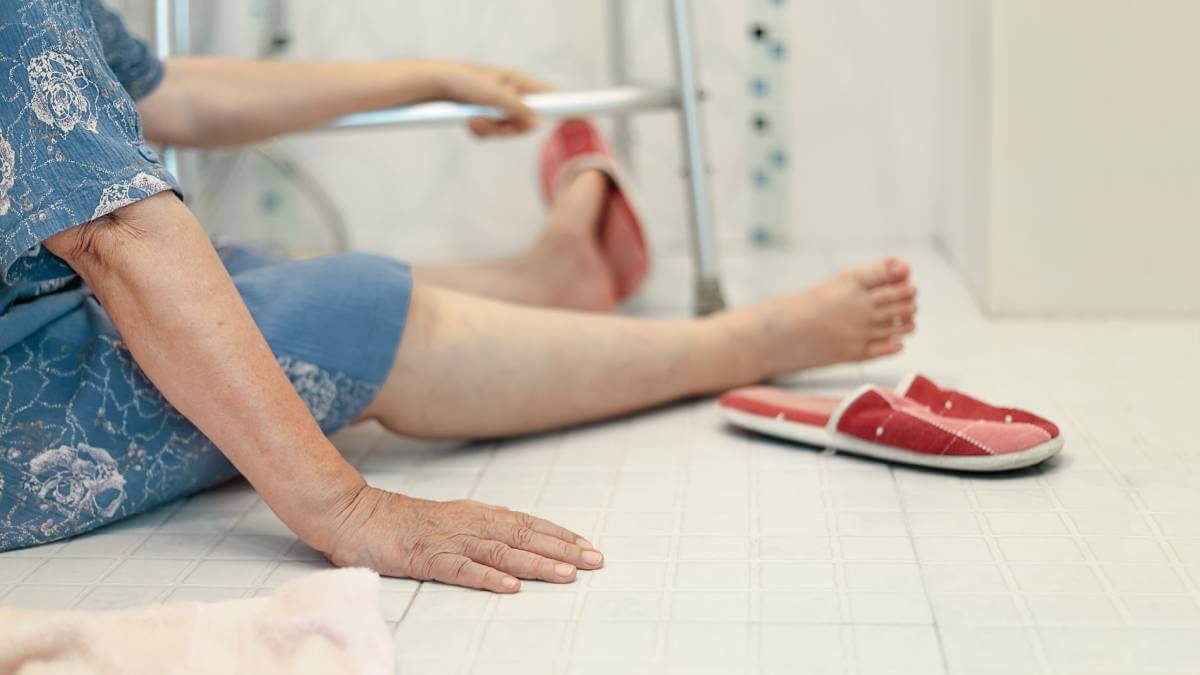As I hurtle towards my 60s, I am all too aware of speed in various aspects of my life. I certainly can’t run at the pace I once did. And although I still play cricket, my reaction time is not what it used to be.
Then there are my dodgy shoulders. The pain certain shoulder movements cause me mean my arm movements can be quite ginger. And it turns out my slowing arm speed could spell danger for me.
While moving my arms more slowly means a lower risk of me wincing in pain, it may create another risk. Research indicates that a loss of arm speed may play a role in increasing the risk of a fall.
This may go a long way towards explaining why the elderly are more prone to falls, often with serious consequences.
It’s not just the ability to put your arms out to prevent or cushion a fall that counts. It turns out that greater arm speed helps you maintain your balance. Younger people with faster arm speed can use this to balance more quickly after tripping, thus preventing a fall.
Slower arm speed means not getting them into a position to regain balance before gravity takes over. A fall results, and for an elderly person with perhaps brittle bones, this can result in a long hospital stay.
A sideways glance at arm speed
As with many things medical, there are complicating factors involved here. In this case, it’s the type of fall that is a factor. There are different types of fall? Yes, there are, and there’s one particular type scientists have apparently been largely ignoring.
A lot of research has gone into the mechanics and bodily reactions to falling forwards or backwards. But its cousin, the sideways fall, has been neglected. Until now. Scientists at the University of Arizona (UoA) have taken steps to balance things up (pun unintended) with a new study.
That study, led by Dr Jonathan Lee-Confer from UoA’s department of physical therapy, involved actually inducing volunteers to slip. That sounds cruel. However, in this case, harnesses fitted to all participants ensured there were no actual falls.
Dr Lee-Confer’s team studied two groups of 11, one older (average age 72) and one younger (average age 25). They were fitted with motion analysis monitoring equipment and made to step along a plexiglass sheet embedded into a walkway.
Sudden movements of the sheet induced sideways falls, and reaction times were measured. When exposed to slip hazards, the younger adults were found by the researchers to react much more quickly.
They accelerated their arms 36 per cent faster, on average, than the older participants. Their reaction time when reaching peak arm speed was also 310 milliseconds faster.
That’s good to know, but how can it help the elderly?
Understanding how something works is often the first step towards being able to modify it for better results. With arm speed, that’s the hope and intention of the work being done by Dr Lee-Confer and his research team.
Their research confirms the words of Professor Stephen Lord from Neuroscience Research Australia. “There’s a lot of work on the relationship between how the legs and feet respond when a person slips,” Prof. Lord says. “But it’s really a whole-of-body response.”
Armed with this enhanced knowledge of the role of arm speed, Dr Lee-Confer is now planning to take the next step. He and his team plan to carry out another study, this time with three groups. One will be given conventional arm strength training.
A second training group will focus on high-velocity movements, such as those used in boxing. A third group will have no intervention, acting as a control for the study.
Around 12 weeks later, the researchers will examine whether the arm responses differ between the groups when exposed to a slip incident and whether this reduces their risk of falls.
Depending on the results of that study, we may just see an increase in older folk taking up boxing! But rather than inflict it, their aim will be to prevent pain – especially their own, as the result of a fall.
Have you found it harder to maintain balance as you’ve grown older? Has that resulted in a fall? Let us know via the comments section below.
Also read: Drones to prevent falls in elderly
Health disclaimer: This article contains general information about health issues and is not advice. For health advice, consult your medical practitioner.

